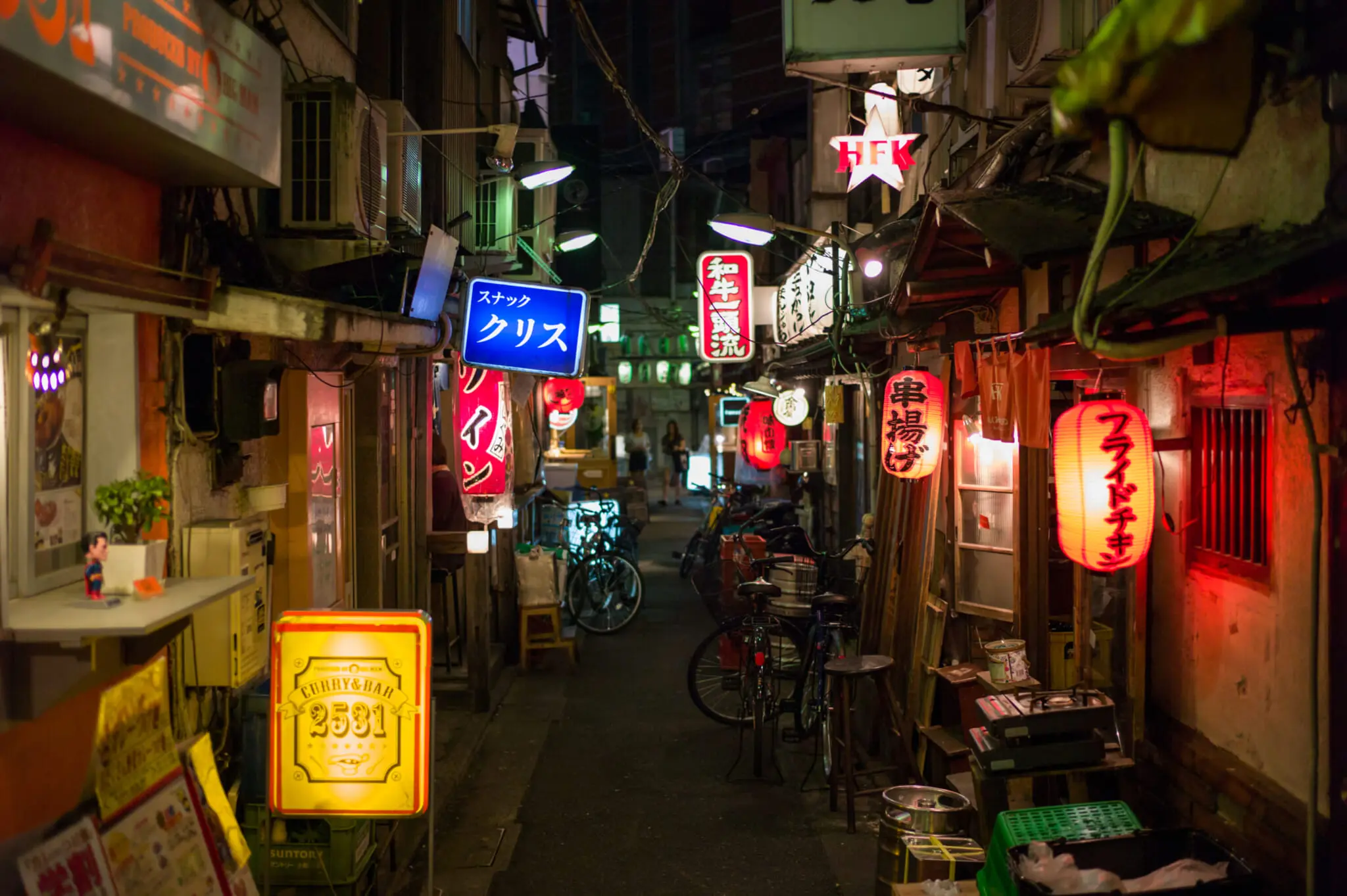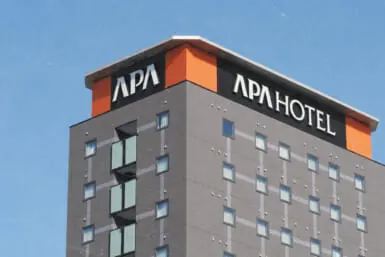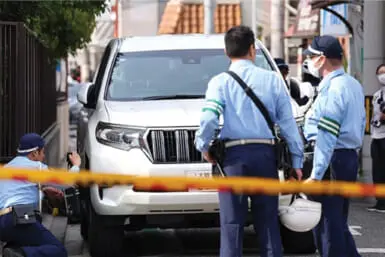You’re lost in Tokyo. It’s nighttime and the winding street in front of you is twinkling with lights, bustling with people and sounds and sights and smells — stimulating, but not overly so. It’s a world away from the glaring neon signs and skyscrapers that you thought you knew of in the world’s largest metropolis. You hear the sizzling of fried food, the chink of glasses and animated chatter as you stroll around. Each shop or stall is different from the next, but all are tiny, mere holes in the wall. Looking inside, there are only enough chairs inside as fingers on your hand, if at all. There are numerous shops and eateries, tucked alongside each other in this labyrinthine hotchpotch of streets. Welcome to your first yokocho.
Tokyo’s yokocho (side streets) are the settings for movies gone by, the flavors of a city crammed into a small grid of eateries and drinking dens. They are melting pots where you’ll find characters who’ve been running their own tiny shop for 50 years, the same regulars every night, alongside newcomers trying their best to attract clientele.
Every person in a yokocho has a story. So what is the main difference between a character in a yokocho restaurant versus a flashy eatery in a skyscraper around the corner? In a yokocho, they’ll probably be open to sharing their tale.
Here is our guide to some of our favorite yokocho in Tokyo.
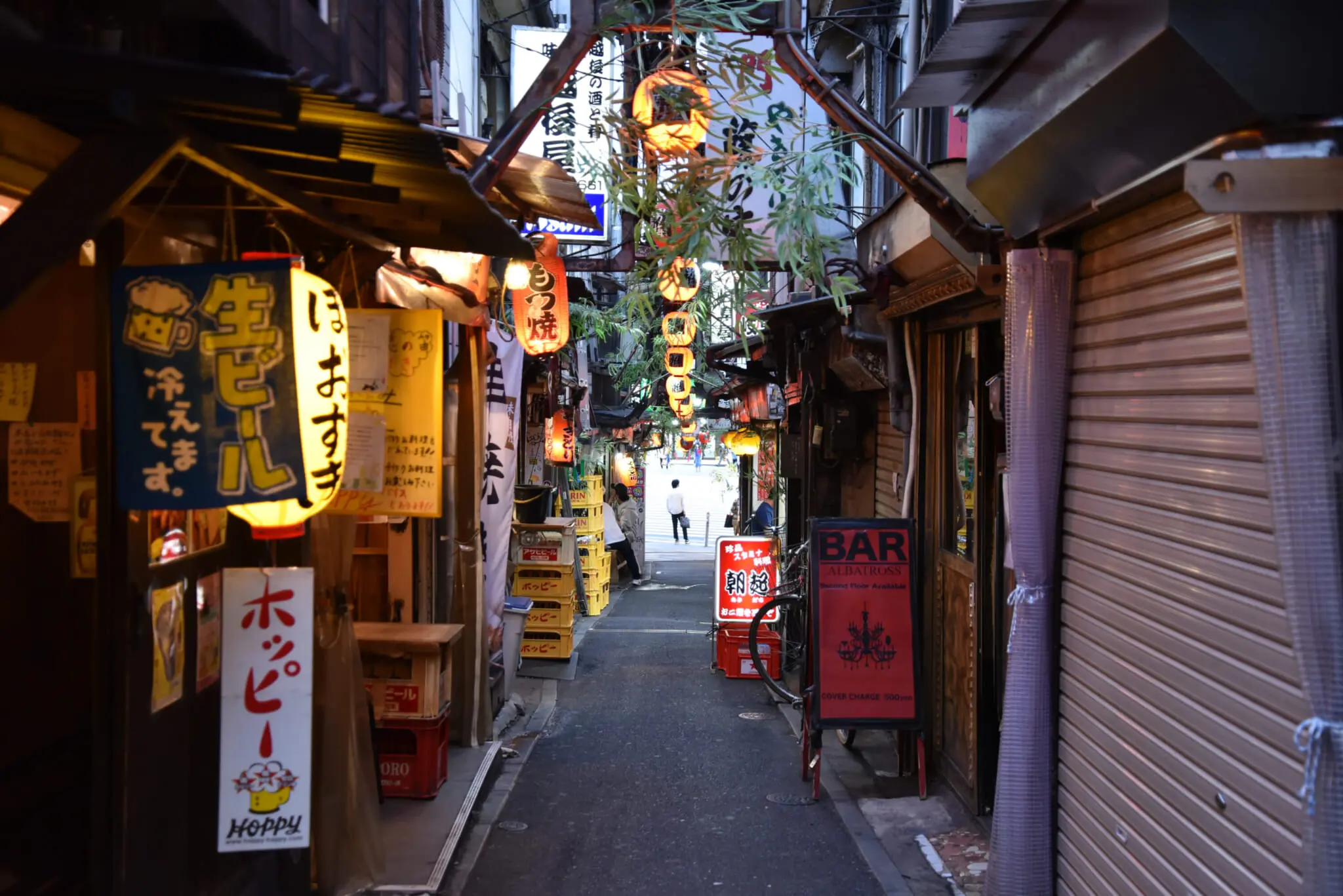
Omoide Yokocho, Omoide Nuke Road, Golden Gai, Shinjuku
Right in the middle of Shinjuku lie these three alleyways, each deeper than the last. Shinjuku is an area known for its late-night establishments and nightlife, and, unsurprisingly it has a wide range of drinking areas known as nomiya-gai.
Golden Gai
The most famous of all is perhaps Golden Gai, a collection of iggledy-piggledy streets with bar after bar stacked atop each other in two or three-story ramshackle buildings. It became famous thanks to authors and photographers like Haruki Murakami and Daido Moriyama, part of Tokyo’s creative circles in the 1960s and 70s.
They were known for frequenting the many bars and literary pubs there, exchanging ideas on a diet of whiskey highballs and tiny snacks. In recent years, Golden Gai has become known as a bit of a tourist spot. This can be both positive and negative for visitors. Some bars have introduced extra fees for tourists, or are protecting their regulars by making their establishments members only. Other places welcome visitors with open arms. Signs such as “I speak English” and “Tourists Free Entry,” proclaim their openness far and wide. Discover a variety of restaurants, bars and food stalls that Golden Gai has to offer through a food tour.
Omoide Yokocho and Omoide Nuke Road
Golden Gai is definitely worth a visit, but there are at least two other yokocho within walking distance, which are just as deserving of patronage. Omoide Yokocho (which means “memory lane”) is located right next to the train tracks near Shinjuku, with a gaudy green and yellow sign to welcome visitors. There are drinking places curtained off with plastic, a cheap late-night soba restaurant and “one of the best Chinese places in the city,” as someone I met in a different yokocho told me.
Head right to the middle of Kabukicho and you may spot the Omoide Nuke Road (the “road of forgotten memories”), a personal favorite. Here you’ll find a Chinese BYOB restaurant, a Taiwanese kitchen up a flight of stairs, surprisingly spacious 30-year-old bars, tiny snack joints and lots more.
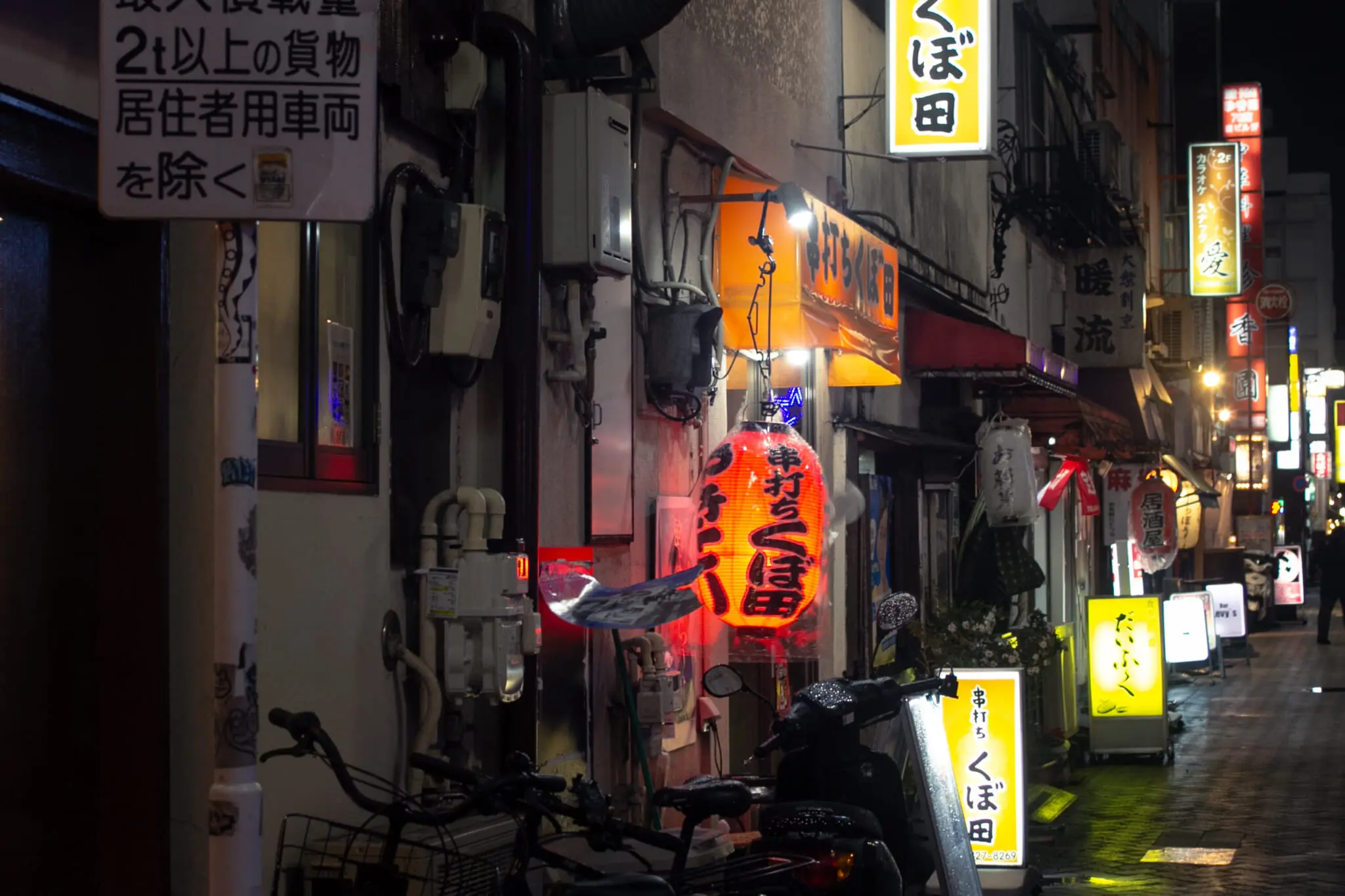
Star Road and Ichou Koji, Asagaya
By day, the Tokyo suburb around Minami-Asagaya Station is known for Pearl, a covered shopping street. Come nightfall, it’s time to head northwest of the station to Star Road. Rather grandly named, Star Road was the haunt of poets and great thinkers of the early 1900s, including Yosano Akiko and Osamu Dazai.
The eateries and tiny bars lining the streets of Star Road are characterized by an abundance of jazz spots that you’ll find tucked away down flights of stairs, on second floors and behind heavy doors. Asagaya was a tiny village in the Meiji period, and its village-like quaintness remains, seeping out of every nook and cranny, from the Moto Chaya Honten that serves oden in a shop lined with records to Plikk Kee Noo across the road, that specializes in Thai dishes.
Elsewhere is the teishoku shop, which didn’t want to be named in this article for fear of ousting regular customers, but rest assured, whichever eatery you find yourself in, there will be plenty of stories and tales to be told when you leave. Nearby is the official yokocho, Ichou Koji, which contains a handful of independent bars and izakaya.
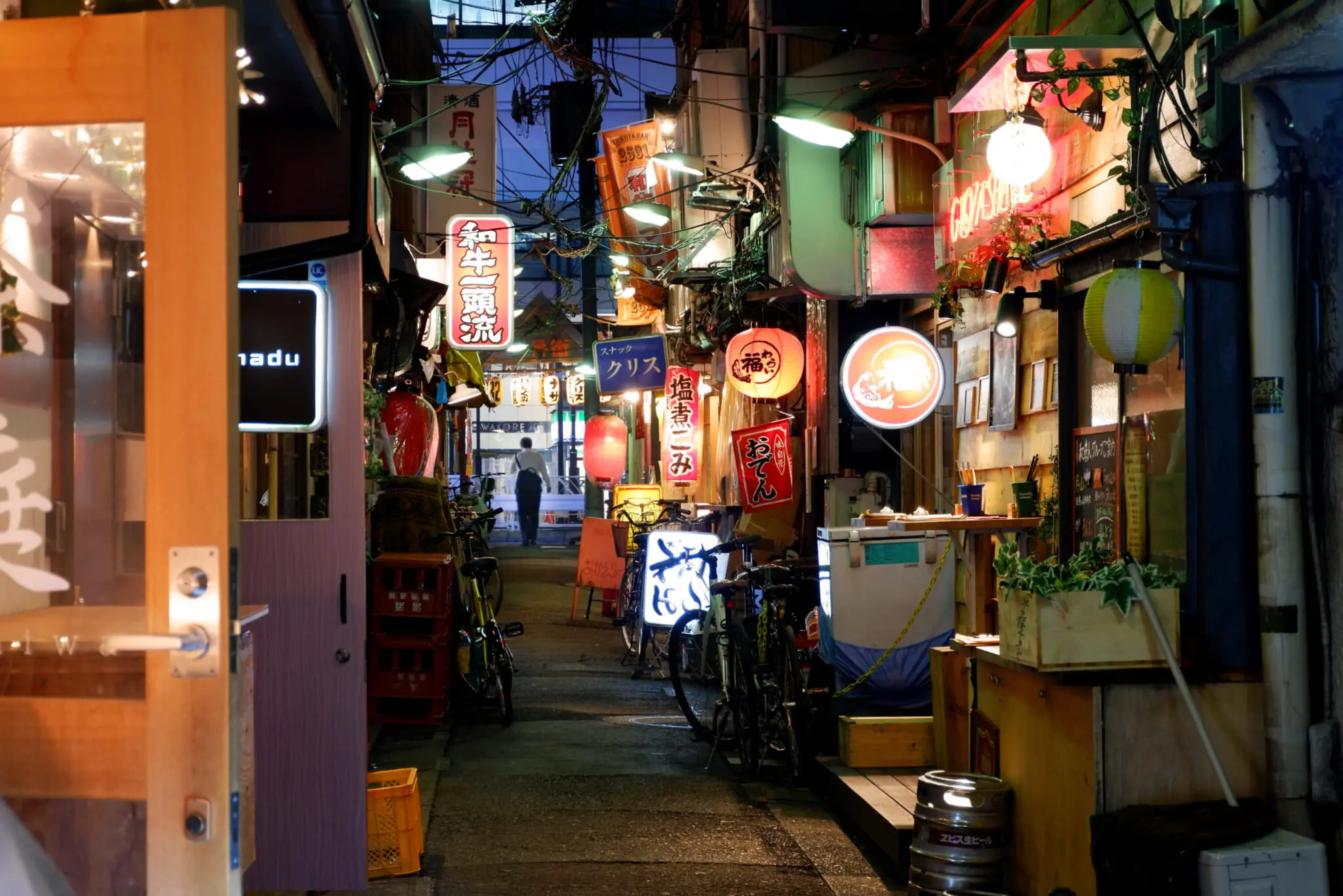
Sankaku Chitai & Suzuran Road, Sangenjaya
It’s hard to work out where one starts and the other begins: Sankaku Chitai and Suzuran Road, in the busy neighborhood of Sangenjaya, are a maze of tiny side streets housing countless drinking spots.
Located near Shibuya, Sangenjaya is a haven for locals who want a regular, quieter place to drink. In contrast to its neon-blazened counterpart, once you get away from the main road, Sangenjaya is dotted with toro (Japanese lanterns) over low-rise buildings. Yakitori, which is written on many of the lanterns, seems like a specialty of the area. Wandering around the many backstreets will, therefore, result in more than a singular blast of yakitori smoke.
In addition to the smoke, don’t be surprised to be showered with drunken singing, voices sneaking out through windows and grates. The two main side streets of Sangenjaya are somewhat of a hotbed for snack bars. For the uninitiated, snack bars are establishments which function as bars, generally run by a snack mama who encourages patrons to pick up the karaoke mic and serenade other guests.
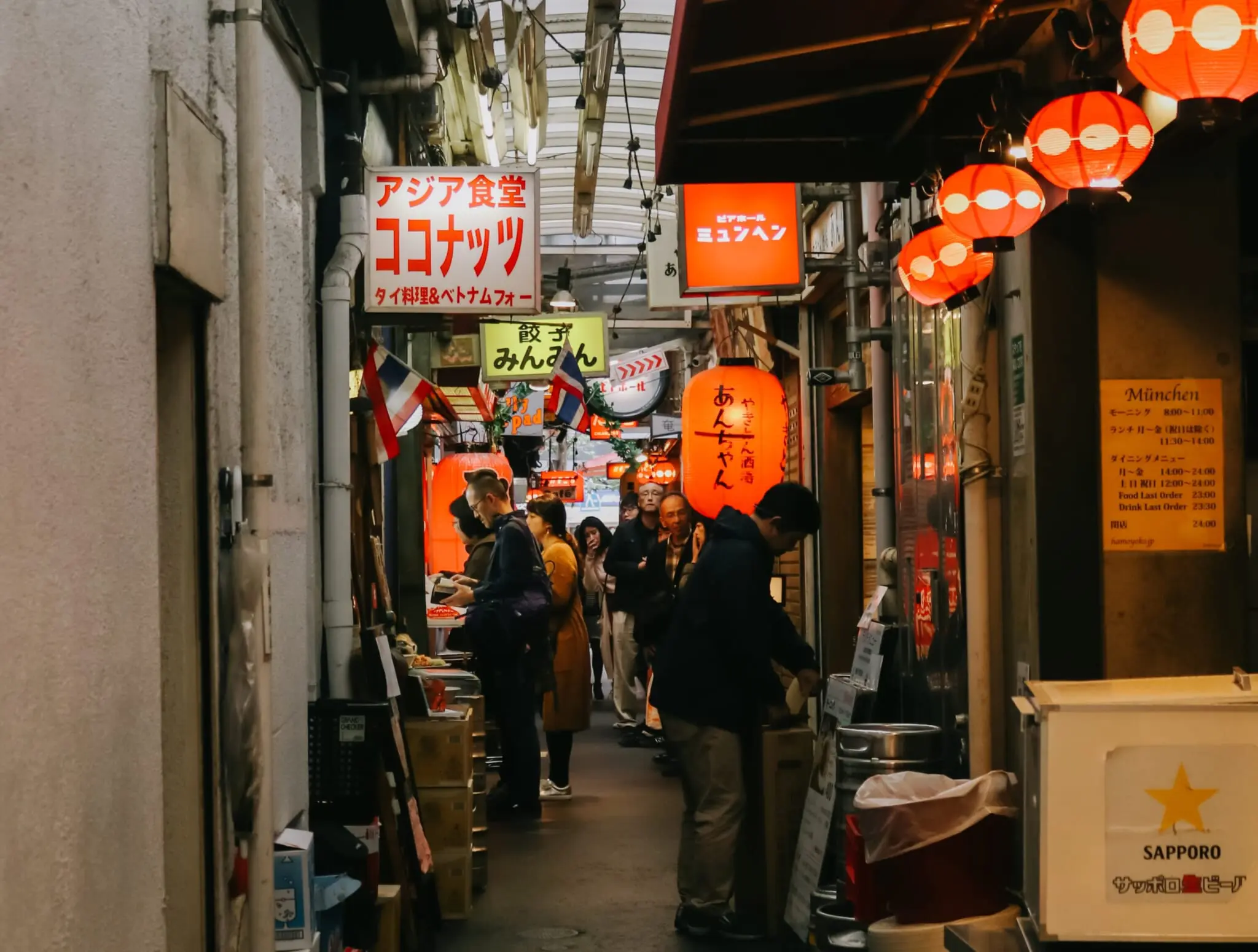
Harmonica Yokocho, Kichijoji
Plastic butcher curtains line the paths around Harmonica Yokocho, Kichijoji’s famous drinking area. Enclosed by a mishmash of shop signs and entrances, this alleyway is so-called because of its many shops with tiny entrances, similar to the holes in a harmonica. The entrance to the alley itself is a little harmonica-like, too, with an oblong blink-and-you-miss-it slit.
Spend the day in the vicinity — well worth it thanks to its variety of stores, ranging from second-hand clothes to traditional Japanese rice crackers — then head into the alleyway for the evening. Sample a lemon sour cocktail while getting to know the locals. In addition to its numerous yakitori joints, you can even sample sushi, as well as Thai and Italian food.
If you’re more of an early bird than a night owl, Harmonica Yokocho also hosts a morning market around once a month. The timings are posted on the Harmonica Yokocho website. Around half of the 100 shops join regularly, offering their wares during the daytime.
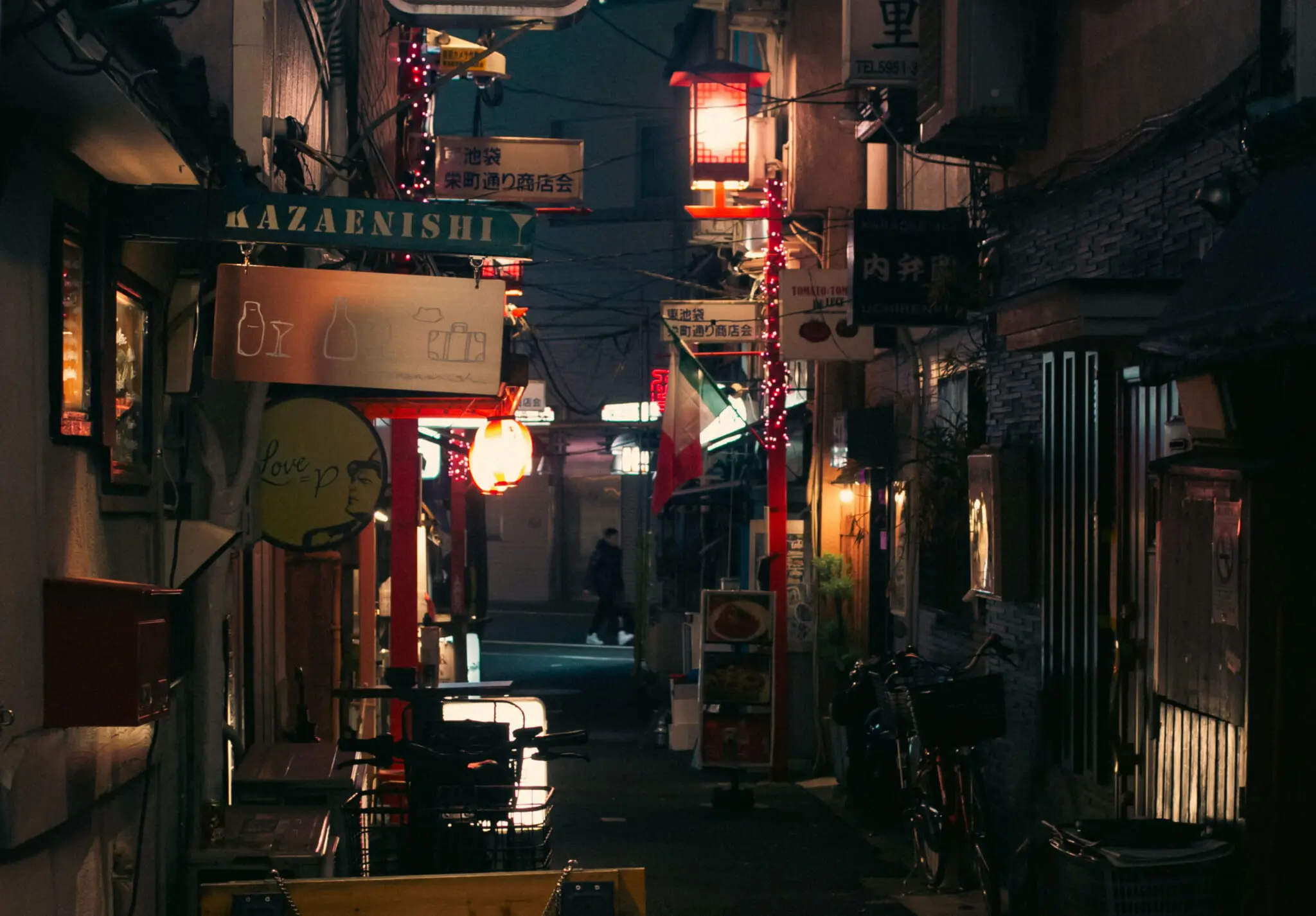
Mikuni Koji & Sakae Machi Road, Ikebukuro
Ikebukuro, a famous salaryman haunt, is full of drinking dens and streets containing snack bars, girls’ bars and host clubs, making it the perfect setting for a few yokocho. More-or-less facing each other from across the road, Mikuni Koji and Sakae Machi Road are two compact side streets containing a variety of drinking establishments.
Don’t be fooled by the shiny new sign — Mikuni Koji was established around 1951, the evolution of a post-war black market. Located a five minute walk from Higashi-Ikebukuro Station, it’s a tiny area with a lot of character, boasting Italian bars alongside oyster places.
A hop and a skip away lies the Sakae Machi Road, with a backlit monochrome entrance sign. Sakae Machi is a lot less unassuming than Mikuni Koji, but with its small passage of drinking bars and izakaya, it’s definitely worth a visit.
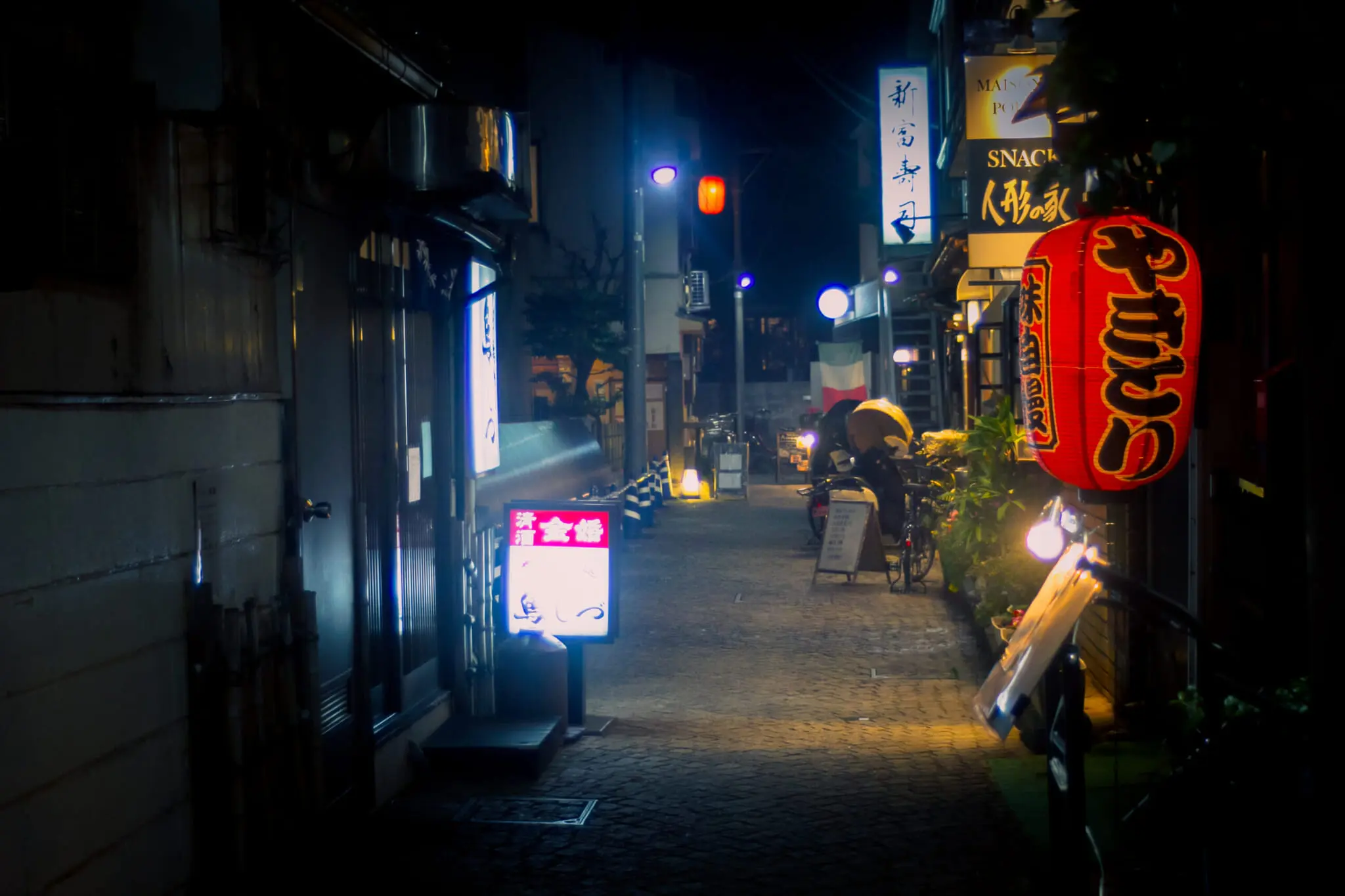
Kakurenbo Yokocho, & Michikura Yokocho, Kaguruzaka
Kagurazaka is famed for its large French population, and walking around the area, you could be forgiven for thinking you’ve ended up in Europe. Kakurenbo Yokocho (hide-and-seek alley) is by far the fanciest on this list. A quaint pathway with myriad side streets, this yokocho has upmarket eateries alongside grimy izakaya. Try the French restaurant serving cider and delicious wine, or the place that’s been serving luxury sushi for decades.
Close by is Michikura Yokocho. Worlds away from its elegant counterpart, Michikura Yokocho is a grimy passage with authentic Japanese food and snack bars behind closed doors. One may hear faint singing if you listen closely, but head inside, and you may be surprised at how friendly some of the places are.
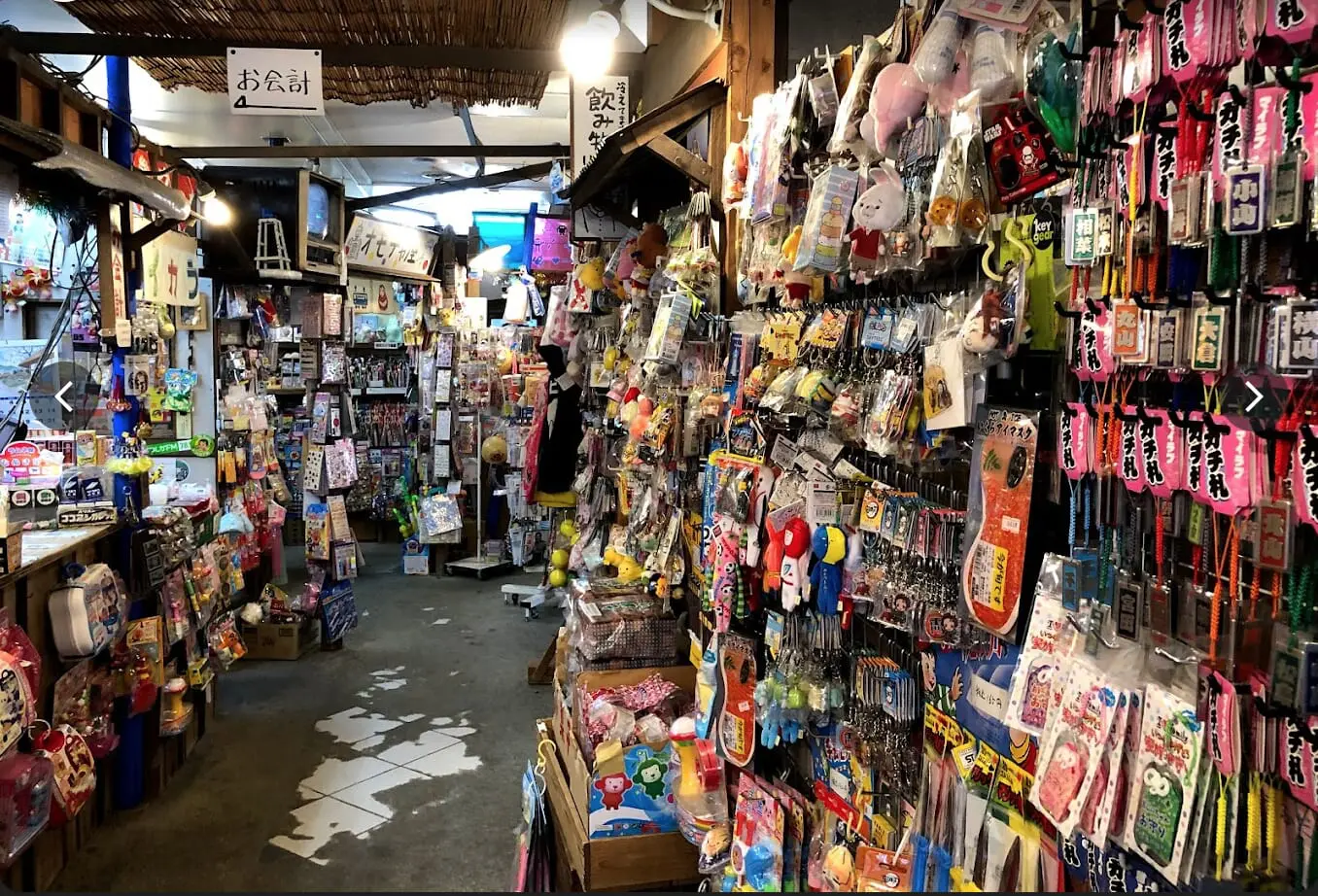
Bonus: High Colour Yokocho, Shibamata
Nestled in Tokyo’s downtown area of Shibamata is this daytime yokocho. One for kids of all ages, High Color Yokocho is actually a large shop. It sells an array of goods and boasts retro game machines. Spend the afternoon losing at pinball or car racing, grab some Japanese Showa period toys and candy while you’re at it. The top floor has a toy museum showcasing different Japanese toys from eras past.
If you’ve made the trip to Shibamata, check out Taishakuten Sando as well. The area is famous for its association with Tora-san, a character from a popular drama series, and has plenty of activities and shops geared towards visitors. Taishakuten Sando is an Edo period shopping street with traditional stores, which makes it well worth a visit.

